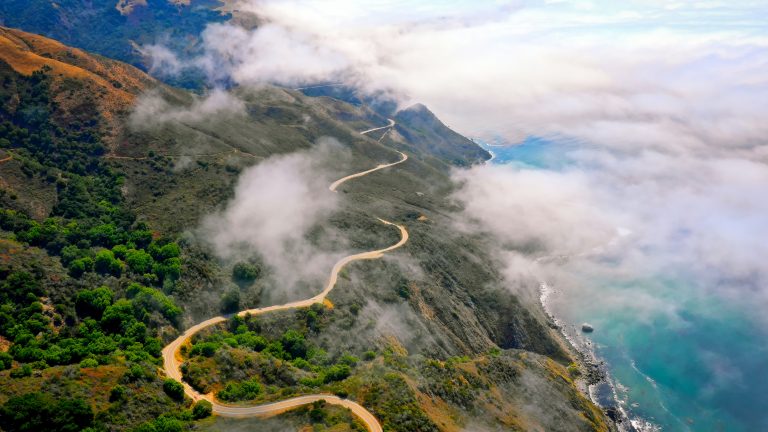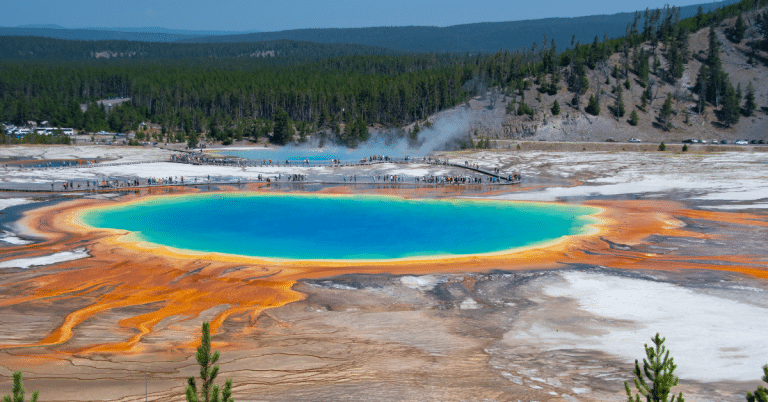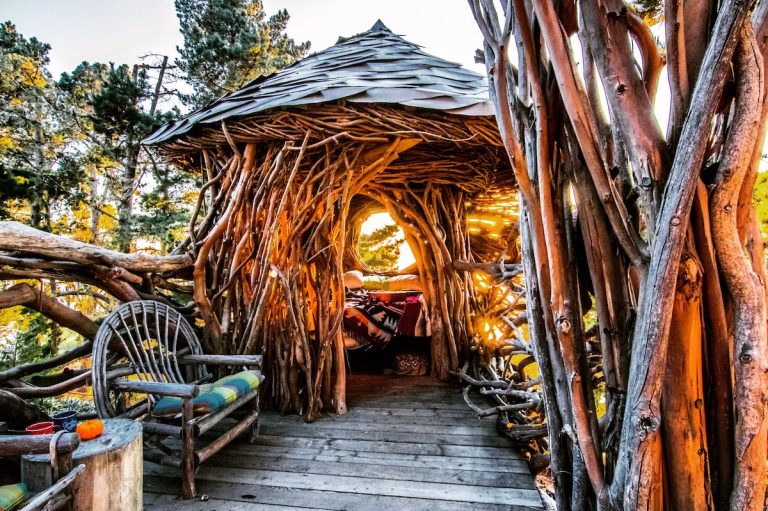Science Explains The Best Seasons For Whale Watching In Big Sur
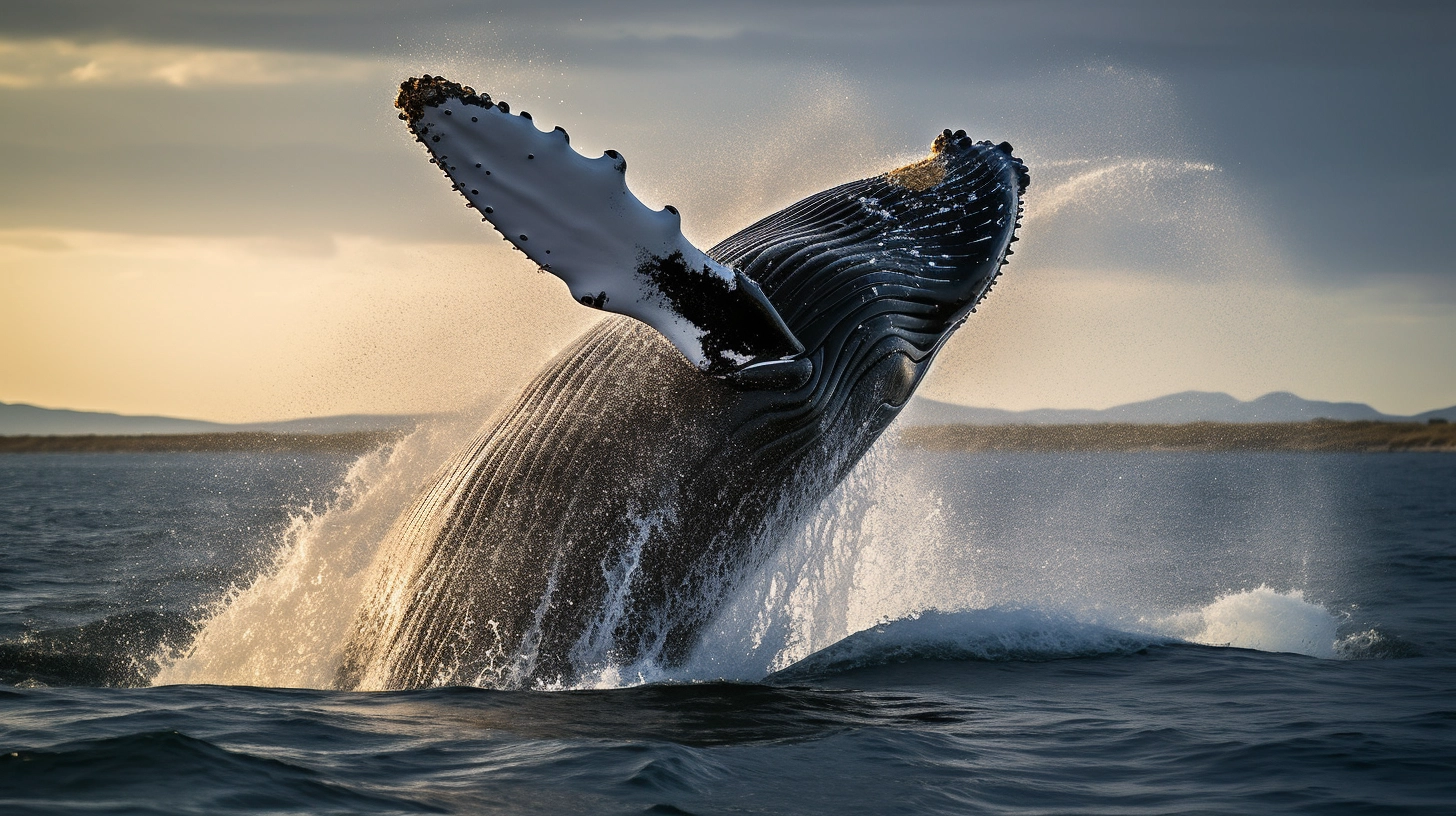
Big Sur’s coastline is a prime spot for whale watching thanks to its deep waters close to shore and nutrient-rich currents.
We’ll dive into these oceanographic and geographical factors later in this article. But for now lets focus on the types of whales that you can spot in Big Sur and explain their behaviour through the lens of marine biology.
Gray Whale Migration And Behavior
Gray whales have this incredible journey they take every year, one of the longest of any mammal. They head from the food-rich waters in the Arctic – places like the Bering and Chukchi Seas – all the way down to Baja California in Mexico for breeding.
As they pass by Big Sur, usually between December and April, these whales are often seen doing ‘bottom feeding’ in the shallower coastal waters. They’re basically rummaging through the seabed, stirring up mud and sand to snack on small sea creatures like crustaceans. If you’re looking to catch sight of them, March and April are usually the best months. That’s when they’re most likely to be seen close to the shore, making their way along their massive migration path.
Blue Whale Feeding Habits And Migration
Blue whales mainly eat krill and tend to move to wherever there’s plenty of it. In Big Sur, during the upwelling season, which usually runs from June to October, there’s a significant increase in krill. Upwelling brings nutrients from the deep sea to the surface, leading to a boom in krill populations.
Unlike some whale species with specific migration routes, blue whales are more flexible. They migrate based on where they can find enough krill to feed on. This pattern brings them to Big Sur during the upwelling months, aligning with the peak times for krill availability in the area.
Humpback Whale Social Behavior And Feeding
Humpback whales are really social and known for their interesting behaviors. You’ll often see them in groups, called ‘pods,’ and they’re pretty active, doing things like jumping out of the water (breaching), slapping their tails on the water’s surface (lob tailing), and hitting the water with their fins (flipper slapping). Scientists think these actions might be their way of talking to each other or just having fun.
They’ve also got this clever way of eating called bubble-net feeding. They work together to create a net of bubbles underwater to trap schools of fish and krill. Then, they swim up through the middle to gulp down their trapped food. It’s pretty smart and a cool thing to watch. That’s why humpback whales are such a hit for whale watching in Big Sur, especially from late spring to early winter when they’re most active in the area.
Orcas’ Hunting Strategies And Movement Patterns
Orcas, or killer whales, are top predators in the ocean, and their visits to Big Sur, usually in spring and fall, are all about their hunt. These guys are pretty smart and work together using some impressive tactics to catch a variety of prey, like fish, seals, and sometimes even baby gray whales during their migration.
Their movement patterns around Big Sur aren’t as predictable as some other whales. It mostly depends on where their next meal is. Since they follow their food, their presence in the area can vary, making their sightings a bit more sporadic compared to other whale species.
Big Sur Whale Watching Seasons
Let’s sum it all up.
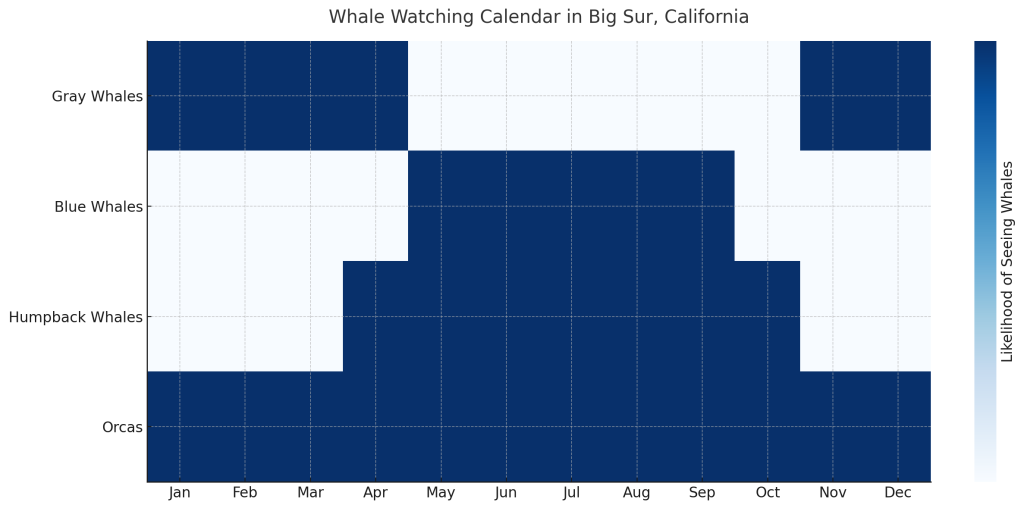
January to March
- Gray Whales. Peak migration period. Gray whales travel southward to Baja California for breeding and can be seen along the coast
April
- Gray Whales. The tail end of the southward migration can still be observed early in the month.
- Humpback and Blue Whales. Begin to appear in the area as they start arriving for the feeding season
May to August
- Blue Whales. Most commonly seen during these months, feeding on krill in areas with upwelling, such as Monterey Bay
- Humpback Whales. Also present and active, known for their acrobatic behaviors
September to October
- Blue Whales. Still present but begin to decrease in numbers as the season progresses.
- Humpback Whales. Continue to be visible, engaging in feeding activities
November to December
- Gray Whales: Begin their southward migration towards the end of the year, making them visible along the coast once again
Year-Round
- Orcas (Killer Whales): Can be seen throughout the year, although their presence is more unpredictable and depends on the availability of prey
Factors Influencing Whale Behavious
To understand the whale behaviour even better let’s look at the oceanographic and geographic factors that influence their behavior.
Upwelling
Big Sur lies within the California Current System, a large-scale oceanic current that flows southward along the western coast of North America. This current interacts with local wind patterns to produce upwelling.
What happens is winds blowing across the ocean surface move the top layer of water away, and this is replaced by colder, nutrient-rich water rising up from the depths. This process enriches the surface waters near the coast with nutrients.
These nutrients are a feast for marine life. They nourish small organisms like plankton, which are the foundation of the ocean food chain. The abundance of plankton attracts small fish, which in turn attract larger fish, creating a rich feeding ground that ultimately draws large marine mammals like whales. These whales come to the nutrient-rich waters of Big Sur to feed. Upwelling typically occurs during the summer and into the fall along the California coast, including Big Sur.
Coastal Topography and Deep Waters
The coast here is pretty unique – it’s steep and rugged, and unlike a lot of other places, the continental shelf here is narrow. This means the deep waters of the Pacific, where a lot of whales hang out, are really close to the shoreline. So, when whales are migrating or feeding, they’re often much closer to the coast than they might be elsewhere. For us on land or on a boat near the shore, this is great news because it means we get to see these incredible creatures up close without having to travel far out to sea.
Marine Canyons and Bathymetry
Now let’s talk about what’s happening beneath the waves of Big Sur. The area is known for its underwater canyons, with the Monterey Canyon being a standout feature. These canyons are kind of like underwater valleys, and they’re really important for marine life. They create special habitats where all sorts of sea creatures can thrive. Plus, these canyons play a big role in gathering nutrients from the deep and bringing them up closer to the surface. This nutrient boost makes the area a hot spot for marine food chains. More food means more fish, and more fish mean more whales.
Migration Routes and Accessibility
The geographical location of Big Sur along the California coast places it directly in the migration routes of several whale species. This includes the gray whale’s migration between the Arctic feeding grounds and the breeding grounds in Baja California. This strategic location, combined with the rich marine food web supported by the upwelling, makes Big Sur an accessible and ideal spot for observing a variety of whale behaviors and species.
If you’re looking to get even closer to these majestic creatures, a boat tour is a ‘spout’-acular experience. Check out my guide on the best Monterey whale watching tours.
Whale watching boats provide platforms for scientific research, offering opportunities for data collection and observation that might not otherwise be possible. This can lead to a better understanding of whale behavior and conservation needs.

